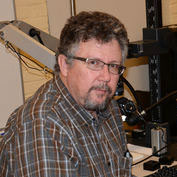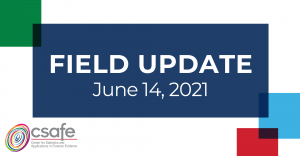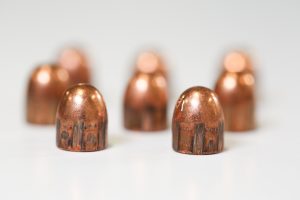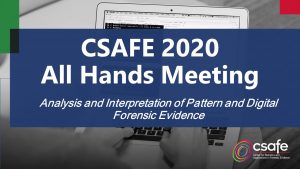Overarching GOALS
CSAFE researchers have made great strides in developing statistical and scientific foundations for assessing and matching firearms and toolmarks. Firearm and toolmark examination, like many other pattern analysis disciplines, is currently grounded in the subjective visual comparison of evidence relying on examiner training. Automatic matching algorithms, like those CSAFE is developing, allow an objective assessment of whether a set of pattern evidence comes from the same source or different sources and, unlike subjective assessments, also provides more quantitative detail about the degree of similarity between the items which are compared.
Looking for
WEBINARS,
Short courses, presentations or publications
on Firearms and Toolmarks Analysis?
Additional Team Members
Susan Vanderplas susan.vanderplas@unl.edu
Robin Mejia rmejia@andrew.cmu.edu
Curtis Mosher cmosher@iastate.edu
Alan Zeng (NIST) alan.zheng@nist.gov
Robert Thompson (NIST) robert.m.thompson@nist.gov
focus Areas
In the last five years, CSAFE has made great strides in assessing striae similarity of bullet striations fired from traditionally rifled barrels using automatic matching algorithms which incorporate both mathematical correlations and features used by examiners. We will build on this existing foundation by expanding the scope of this matching algorithm and widen its applicability along several different dimensions.Firearm and toolmark examination, like many other pattern analysis disciplines, is currently grounded in subjective visual comparison of evidence relying on examiner training. Automatic matching algorithms allow an objective assessment of whether a set of pattern evidence comes from the same source or different sources and, unlike subjective assessments, also provides more quantitative detail about the degree of similarity between the items which are compared. In the last five years, we have made great strides in assessing striae similarity of bullet striations fired from traditionally rifled barrels using automatic matching algorithms which incorporate both mathematical correlations and features used by examiners.We will build on this existing foundation by expanding the scope of this matching algorithm and widen its applicability along several different dimensions by:
- (1) Developing methods to acquire and analyze 360° scans, allowing us to apply the matching algorithm to firearms with polygonal rifling
- (2) Exploring factors affecting the matching algorithm’s performance. It is well known that different types of firearms mark differently. An objective assessment allows us to quantify this difference. Leveraging ongoing collaborations with crime labs, we will assess and quantify the quality of marks made by different firearms on different types of ammunition. We will also use the same techniques to assess the quality of marks in a single scan to identify areas which are suitable for further analysis.
- (3) Transitioning the algorithm from research to practice. The matching algorithms have been developed to augment and support examiner assessment of evidence; they are not designed to replace the need for examiner expertise. We anticipate working with crime labs to explore avenues for funding high-resolution microscopy capabilities in forensic labs, and provide training to examiners in the use of the algorithm in casework while we fine-tune the algorithm’s performance in a challenging, high-stakes environment.
The aim of this research is to determine the accuracy and reproducibility of firearms examiners in identifying subclass characteristics and separating subclass from individual characteristics on firearm evidence. This study will show the ability of examiners to identify subclass characteristics that should be avoided when performing a comparison. The consistency of examiners in identifying subclass characteristics will also be determined. At the conclusion of this study, double-casts or digital files may be requested for teaching and training purposes.
The aim of this research proposal is to determine the accuracy and reproducibility of firearms examiners in identifying subclass characteristics and separating subclass from individual characteristics on firearm evidence. A firearm with the capability of a changeable breech face will be used throughout this study. This allows for many breech faces to be manufactured utilizing the different manufacturing techniques typically used by firearm manufacturers (e.g., broaching, milling and turning). Along with the manufacturing techniques being used, several finishing methods will be used to complete the manufacturing process. Test fires will be collected to examine the reproduction of potential subclass characteristics onto fired cartridge cases. A Sensofar® S neox 3D optical profiler will be used to collect high-quality topographic scans of both the breech face inserts and the cartridge cases. These scans will be compared using the NIST congruent matching cells (CMC) algorithm through an ongoing collaboration to analyze the effects of subclass characteristics on objective comparison algorithms. Replications of the collected cartridge cases and the breech face inserts will be produced using a double-casting procedure. This allows examiners who participate in this study to examine the same surfaces with the same features as other examiners. This study will show the ability of examiners to identify subclass characteristics that should be avoided when performing a comparison. The consistency of examiners in identifying subclass characteristics will also be determined. All physical cartridge cases and manufactured breech faces will be retained along with their digital surface scans. At the conclusion of this study, double-casts or digital files may be requested for teaching and training purposes.
Forensic laboratories will be contacted to request permission to test fire firearms from their reference collections to be included in a database as well as to acquire a wide variety of firearms to test for subclass characteristics. Four calibers will be the main focus of this study, including the common pistol calibers of 9 mm Luger, .40 S&W, and .45 ACP, and the rifle caliber .223 Remington/5.56 mm x 45 mm due to the popularity of the AR-15 semi-automatic rifle and its clones. Samples will be collected from the reference collections of five forensic laboratories. After collection, the researchers begin the acquisition of the cartridge cases, running the NIST congruent matching cell (CMC) algorithm, saving crops of 3D topography images and uploading images to the NIST database. Based on our predictions, by the end of this study, 15 cartridge cases from approximately 3,000 firearms will be included in the database. This database will be made publicly available through NIST. It can be used for research and evidence interpretation. This database would allow for error rate studies of firearm examiner performance and the assessment of automated comparison systems. It would also allow for the assessment similarity metrics, such as likelihood ratios, for firearm evidence. Additionally, it will provide a relevant background database for forensic laboratories when they adopt 3D microscopy as a primary comparison tool.
Similar to firearms, the determination of whether a suspect tool (e.g., screwdriver, wire cutter) is the source of a crime scene toolmark is currently a subjective decision. CSAFE is undertaking the development of a database of toolmark images (2D and 3D) and will use the database to carry out a black-box study in collaboration with partners. This will allow us to estimate the error rate of toolmark analysts. The initial database will focus on one type of tool while varying other features.
Forensic toolmark examiners need a statistical method to determine how likely it is that two toolmarks were created by the same tool, as opposed to by different tools, that is, a statistical method for analyzing toolmarks. (1) To develop such a method, it is first necessary to create a high-quality database of toolmarks. If approved, in this project we will create a database of toolmarks by using screwdrivers — one of the simplest tools that is commonly used in crimes and that can serve as an initial step in statistical models of toolmark examination. The database will have a factorial design with 2D and 3D images of marks made by different tools, at different angles, replicated several times, as inspired by the NIST NBIDE database (this allows for evaluating within- and between-tool variation). The database will be made available to the public for further research. (2) After the database is completed, we will develop an algorithm to determine a score-based likelihood ratio, which compares the likelihood that the toolmark was created by the same tool and the likelihood that it was not. This algorithm will build upon the work in firearms by CSAFE in its first five years. (3) Finally, we will validate the algorithm by testing its external validity. We will acquire toolmarks created by forensic laboratories for which the analysts know the right answer and we do not, so we can test the performance of our algorithm. The CSAFE firearms algorithms have been validated in this way successfully in the past. Finally, the creation of an algorithm for toolmark analysis, developed by using the work previously done by CSAFE in firearms, will help us learn how to expand the algorithm approach to other forensic disciplines.
Knowledge Transfer
Found 32 Results
Page 1 of 2
Page 1 of 2
Page 1 of 2
Forensic Toolmark Comparisons
Type: Presentation Slides Research Area(s): Firearms and Toolmarks
Published: 2023 | By: Maria Cuellar
Forensic practitioners determine whether two marks were generated by the same tool by observing the 2D images of the marks using a comparison microscope and deciding whether the ``surface contours of two toolmarks are in sufficient agreement'' based on the…
Effect of Subclass Characteristics on Congruent Matching Cells (CMC) Algorithm
Type: Presentation Slides Research Area(s): Firearms and Toolmarks
Published: 2023 | By: Veronica Franklin
This presentation is a continuation of subclass characteristics present on consecutively manufactured breech face inserts. The objective is to assess manufacturing methods similar to those used by firearm manufacturers. It has been shown that subclass characteristics will be present on…
Diagnostic Tools for Automatic Cartridge Case Comparisons
Type: Presentation Slides Research Area(s): Firearms and Toolmarks,Forensic Statistics
Published: 2023 | By: Joseph Zemmels
The following was presented at the Association of Firearm and Tool Mark Examiners (AFTE) 2023, Austin, Texas, May 21-26, 2023. Copyright 2023, The Authors. Posted with permission of CSAFE.
A Study in Reproducibility: The Congruent Matching Cells Algorithm and cmcR Package
Type: Publication Research Area(s): Firearms and Toolmarks
Published: 2023 | By: Joseph Zemmels
Scientific research is driven by our ability to use methods, procedures, and materials from previous studies and further research by adding to it. As the need for computationally-intensive methods to analyze large amounts of data grows, the criteria needed to…
CSAFE Project Update & ASCLD FRC Collaboration
Type: Presentation Slides Research Area(s): Digital,Firearms and Toolmarks,Footwear,Forensic Statistics,Handwriting,Implementation and Practice
Published: 2022 | By: Jeff Salyards
This presentation highlighted CSAFE's collaboration with the ASCLD FRC Collaboration Hub.
Judging Firearms Evidence
Type: Publication Research Area(s): Firearms and Toolmarks,Implementation and Practice
Published: 2023 | By: Brandon L. Garrett
Firearms violence results in hundreds of thousands of criminal investigations each year. To try to identify a culprit, firearms examiners seek to link fired shell casings or bullets from crime scene evidence to a particular firearm. The underlying assumption is…
Blind Testing and Blind Verification in Firearms
Type: Presentation Slides Research Area(s): Blind Testing,Firearms and Toolmarks
Published: 2023 | By: Maddisen Neuman
This workshop provides a summary of the Houston Forensic Science Center's blind quality control program, focusing on blind quality control and blind verification in the Firearms section. The presenters will share their experiences- successes and failures- to best inform other…
An Open-Source Implementation of the CMPS Algorithm for Assessing Similarity of Bullets
Type: Publication Research Area(s): Firearms and Toolmarks,Forensic Statistics
Published: 2022 | By: Wangqian Ju
In this paper, we introduce the R package cmpsR, an open-source implementation of the Congruent Matching Profile Segments (CMPS) method developed at the National Institute of Standards and Technology (NIST) for objective comparison of striated tool marks. The functionality of…
A Pipeline for Cartridge Case Comparisons
Type: Poster Research Area(s): Firearms and Toolmarks
Published: 2022 | By: Joseph Zemmels
We introduce novel sub-procedures in the pre-processing, comparison and similarity feature steps. The sub-procedures result in an improved error rate compared to our implementation of the CMC method while also requiring fewer parameters. The fitted Decision tree model is easily…
Affect of Manufacturer Finishing Methods on Subclass Characteristics Production on Breech Faces
Type: Presentation Slides Research Area(s): Firearms and Toolmarks
Published: 2022 | By: Veronica Franklin
The following is a presentation given at Association for Firearms and Toolmarks (AFTE) (2022).
An Algorithm for Forensic Toolmark Comparisons
Type: Presentation Slides Research Area(s): Firearms and Toolmarks
Published: 2022 | By: Maria Cuellar
Forensic handheld toolmark examiners currently compare toolmarks (e.g. scratch marks on wire found as part of an explosive device, or on a door frame after someone broke into a house) by observing 2D images and subjectively deciding whether two marks…
Exploration of Subclass Characteristics Manufacturing
Type: Presentation Slides Research Area(s): Firearms and Toolmarks
Published: 2021 | By: Veronica Franklin
A webinar presented during the Forensic Technology Center of Excellence (FTCoE0 Firearm and Toolmark webinar series on the progress of our CSAFE project. This study assesses the production of subclass characteristics during the manufacturing of breech faces by three different…
Surveying Practicing Firearm Examiners
Type: Publication Research Area(s): Firearms and Toolmarks,Implementation and Practice
Published: 2022 | By: Nicholas Scurich
A sample (n = 79) of practicing firearm and toolmark examiners was queried about casework as well as their views about the potential role that statistics might play in future firearm examinations and expert witness testimony. Principal findings include: The…
Blind testing in firearms: Preliminary results from a blind quality control program
Type: Publication Research Area(s): Firearms and Toolmarks,Implementation and Practice
Published: 2022 | By: Maddisen Neuman
Open proficiency tests meet accreditation requirements and measure examiner competence but may not represent actual casework. In December 2015, the Houston Forensic Science Center began a blind quality control program in firearms examination. Mock cases are created to mimic routine…
Ruger LCP Study: a two-pronged approach
Type: Presentation Slides Research Area(s): Firearms and Toolmarks
Published: 2021 | By: Melissa Nally
This study started as an attempt to take a closer look at the rifling observed in the 380 Auto Ruger LCP pistol
Treatment of inconclusives in the AFTE range of conclusions
Type: Publication Research Area(s): Firearms and Toolmarks
Published: 2021 | By: Heike Hofmann
In the past decade, and in response to the recommendations set forth by the National Research Council Committee on Identifying the Needs of the Forensic Sciences Community (2009), scientists have conducted several black-box studies that attempt to estimate the error…
Using Machine Learning Methods to Predict Similarity of Striations on Bullet Lands
Type: Presentation Slides Research Area(s): Firearms and Toolmarks
Published: 2020 | By: Heike Hofmann
Recent advances in microscopy have made it possible to collect 3D topographic data, enabling virtual comparisons based on the collected 3D data next to traditional comparison microscopy. Automatic matching algorithms have been introduced for various scenarios, such as matching cartridge…
CSAFE 2021 Field Update
Type: Presentation Slides,Webinar Research Area(s): Bloodstain,Digital,Firearms and Toolmarks,Footwear,Forensic Statistics,Handwriting,Implementation and Practice,Latent Print,Training and Education
The 2021 Field Update was held June 14, 2021, and served as the closing to the first year of CSAFE 2.0. CSAFE brought together researchers, forensic science partners and interested community members to highlight the organization’s achievements, identify areas for…
Treatment of Inconclusive Results in Error Rates of Firearm Studies
Type: Webinar Research Area(s): Firearms and Toolmarks
This CSAFE webinar was held on February 10, 2021. Presenters: Heike Hofmann Professor and Kingland Faculty Fellow, Iowa State University Susan VanderPlas Research Assistant Professor, University of Nebraska, Lincoln Alicia Carriquiry Distinguished Professor and President's Chair in Statistics, CSAFE Director…
CSAFE 2020 All Hands Meeting
Type: Webinar Research Area(s): Bloodstain,Digital,Firearms and Toolmarks,Footwear,Forensic Statistics,Handwriting,Implementation and Practice,Latent Print,Training and Education
The 2020 All Hands Meeting was held May 12 and 13, 2020 and served as the closing to the last 5 years of CSAFE research and focused on kicking off new initiatives for the next phase of the center, CSAFE…
Page 1 of 2
COMMUNITY CALL-TO-ACTION
Want to collaborate with CSAFE on a project. Contact us to share your idea.










